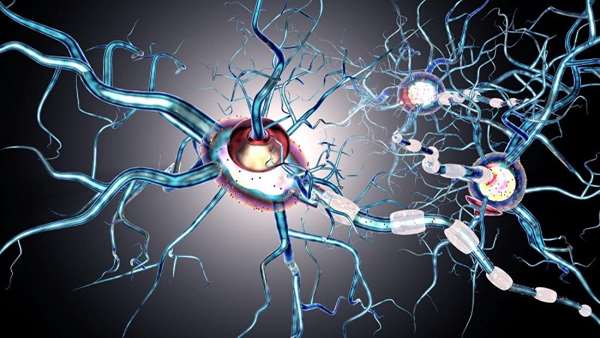Greater Benefits for Relapsing-Remitting MS Found with HSCT Therapy
Nonmyeloablative hematopoietic stem cell transplantation (HSCT) was associated with prolonged time to disease progression when compared to disease-modifying therapies (DMT) for patients with relapsing-remitting multiple sclerosis (RRMS), according to results published in Journal of the American Medical Association (JAMA).
Nonmyeloablative hematopoietic stem cell transplantation (HSCT) was associated with prolonged time to disease progression when compared to disease-modifying therapies (DMT) for patients with relapsing-remitting multiple sclerosis (RRMS), according to results published in Journal of the American Medical Association (JAMA).
In a randomized controlled trial, participants who met inclusion criteria for the trial (N=110) were randomized into the HSCT group (n=55) and continuation of DMT group (n=55). There were no significant differences between the HSCT and DMT groups in terms of sex, age, baseline expanded disability status scale (EDSS) scores, number of gadolinium-enhancing lesions, T2-weighted lesion volume on MRI before randomization, number of prior DMTs, or type of prior DMT or immune treatments.
Participants in the DMT group received a DMT of higher efficacy or a different class than the therapy taken at the time of randomization (based on decision of their treating neurologist). For patients in the HSCT group, DMT use was discontinued, followed by variable washout periods before admission for HSCT.
Peripheral blood stem cells were collected 10 days after intravenous cyclophosphamide (2 g/m2) and 5 to 10 μg/kg per day of subcutaneous filgrastim beginning 5 days after cyclophosphamide. The immune ablative regimen was intravenous cyclophosphamide, 50 mg/kg per day on days −5 to day −2 before stem cell infusion (day 0) and rabbit antithymocyte globulin, .5 mg/kg on day −5, 1 mg/kg on day −4, and 1.5 mg/kg on days −3, −2, and −1. Blood products were irradiated, cytomegalovirus safe, and leukocyte depleted. Filgrastim (5-10 μg/kg per day) was started on day +4 and continued until engraftment.
The primary endpoint, defined as an increase in disease progression (EDSS score increase of ≥1) of at least 1 point on 2 evaluations 6 months apart after at least 1 year of treatment, occurred in 3 patients in the HSCT group and 34 patients in the DMT group, with a median follow-up of 2 years. The proportion of patients in the HSCT group with disease progression was 1.92% (95% confidence interval [CI], .27%-12.9%) at 1 year and 2 years, 5.19% (95% CI, 1.26%- 20.1%) at 3 years, and 9.71% (95% CI, 3%-28.8%) at 4 and 5 years.
The proportion of patients in the DMT group with disease progression was 24.5% (95% CI, 14.7%-39.1%) at 1 year, 54.5% (95% CI, 40.7%-69.4%) at 2 years, 62.5% (95% CI,48.3%- 76.7%) at 3 years, 71.2% (95% CI, 56.8%-84.2%) at 4 years, and 75.3% (95% CI, 60.4%-87.8%) at 5 years.
Mean EDSS score decreased (improved) in the HSCT group, from a pre-HSCT score of 3.38 to 2.36 at 1 year (mean change, −1.02 points), while the mean EDSS score increased (worsened) in the DMT group, from 3.31 to 3.98 at 1 year (mean change, +.67 points). The difference between the HSCT group and DMT group in the change in EDSS scores from baseline to 1 year was −1.7 (95% CI, −2.03 to −1.29; P <.001).
Notably, there was significant improvement in EDSS scores, NRS scores, and T2-weighted lesion volume percentages in the 31 patients who crossed over from the DMT group to receive HCST, suggesting that current definitions of progression for RRMS may not accurately assess irreversible disease progression for all patients.
Investigators noted this study was limited by its small sample size and the limited ability to collect follow-up data for patients receiving DMT and to assess longer-term secondary outcomes due to a study design that allowed patients in the DMT group in whom that treatment failed to cross over to receive HSCT.
HSCT is designed to eliminate autoreactive lymphocytes and “reboot” the immune system in a non-inflammatory environment. In an observational study of long-term disability outcomes of patients with relapsing and progressive forms of MS, researchers found that nearly half of these patients were free of neurological progression 5 years after receiving autologous HSCT1. Better outcomes were associated with younger age, relapsing form of MS, fewer prior immunotherapies, and lower EDSS score at baseline.
“We think what happens in HSCT is that the immune response is exposed to myelin in the absence of the danger signal,” Richard K. Burt, MD, principle investigator and chief, division of immunotherapy at Northwestern University"s Feinberg School of Medicine in Chicago, Illinois, said in an interview with the National MS Society. “What we’re doing is stopping inflammation you need to treat when the disease in its inflammatory stage.”
Reference:https://jamanetwork.com/journals/jama/article-abstract/2720728?resultClick=1





ارسال به دوستان